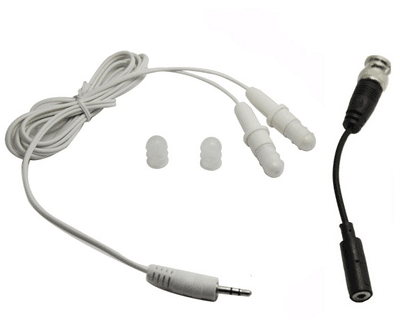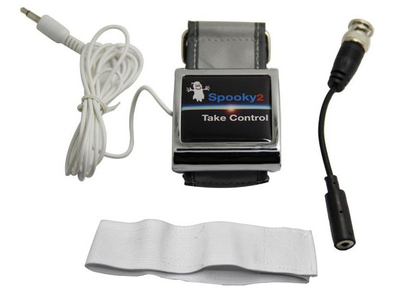Cold laser
Cold laser therapy, also known as Low Level Laser Therapy (LLLT), uses safe, non-heating light photons to speed up the body’s natural healing processes. This light can easily penetrate all the layers of our skin. It’s particularly helpful for treating pain, joint and nerve issues, wounds, burns, dental problems, swollen lymph nodes, tinnitus, and bone and tissue regeneration, among other uses.
Cold lasers are low-power lasers that emit non-heating light photons. These photons pass through the skin and the fat tissues beneath it. The light energy is then absorbed by the light-sensitive parts of cells. This process is similar to how plants use sunlight for photosynthesis, where they absorb sunlight and convert it into energy for growth.
When cells absorb this light energy, they “normalize,” which boosts their metabolism and speeds up the reduction of pain, inflammation, and swelling. The absorbed photons stimulate the mitochondria to produce more ATP, the energy currency of cells. This increase in cellular energy helps transform sick cells into healthy, stable ones.
History
In 1974, while researching cancer cells, Professor Fritz-Albert Popp made a remarkable discovery: all cells store light photons, especially around their DNA. He found that cancerous and other diseased cells emit photons at levels significantly different from those of healthy cells. Popp theorized that this stored light might play a crucial role in cellular communication, helping to maintain overall health. Later, Russian DNA research confirmed his findings. The therapeutic benefits of cold laser therapy are supported by numerous medical studies.
Scientific studies
For over 40 years, physicians have used cold laser therapy as an effective alternative method for pain relief. Since 1967, more than 2,500 clinical studies have been published worldwide. Most of these studies were double-blinded and placebo-controlled, demonstrating the effectiveness of cold laser therapy for pain relief.
Low-level laser theraphy with pulsed infrared laser accelerates third-degree burn healing process
This study investigated the influence of pulsed low-level laser solution (LLLT) on the healing of a third-degree burn in a rat model. Two third-degree burns (distal and proximal) were made in the skin of 74 rats. Rats were divided into four groups. In group 1, the distal burn received LLLT with laser switched off; in groups 2 and 3, distal burns were treated with a 3,000 Hz-pulsed infrared diode laser with 2.3 and 11.7 J/cm(2) energy densities, respectively. In group 4, the distal burns were treated topically with 0.2% nitrofurazone. The proximal burn of all groups was considered a control burn. We assessed the response to treatment both microbiologically and macroscopically. The chi-square test showed that the incidence of Staphylococcus epidermidis, Lactobacillus, and diphtheria decreased significantly in laser-treated groups compared with other groups. Independent sample t-test showed that LLLT with 11.7 J/cm(2) energy density significantly increased wound-closure rate at 3 and 4 weeks after burning compared with their relevant control burns (p = 0.018 and p = 0.01, respectively). Pulsed LLLT with 11.7 J/cm(2)/890 nm of a third-degree burn in a rat model significantly increased wound-closure rate compared with control burns.
[J Rehabil Res Dev. 2009;46(4):543-54.]
Low level diode laser accelerates wound healing
The effect of wound illumination time by pulsed diode laser on the wound healing process was studied in this paper. For this purpose, the original electronic drive circuit of a 650-nm wavelength CW diode laser was reconstructed to give pulsed output laser of 50 % duty cycle and 1 MHz pulse repetition frequency. Twenty male mice, 3 months old were used to follow up the laser photobiostimulation effect on the wound healing progress. They were subdivided into two groups and then the wounds were made on the bilateral back sides of each mouse. Two sessions of pulsed laser solution were carried along 15 days. Each mice group wounds were illuminated by this pulsed laser for 12 or 18 min per session during these 12 days. The results of this study were compared with the results of our previous wound healing solution study by using the same type of laser. The mice wounds in that study received only 5 min of illumination time solution in the first and second days of healing process. In this study, we found that the wounds, which were illuminated for 12 min/session healed in about 3 days earlier than those which were illuminated for 18 min/session. Both of them were healed earlier in about 10-11 days than the control group did.
[Lasers Med Sci. 2013 May;28(3):941-5. doi: 10.1007/s10103-012-1182-4. Epub 2012 Aug 16.]
Benefits
Cold laser therapy is a non-invasive procedure that does not require surgical incisions. It offers several unique benefits, including:
- No prolonged recovery time
- No need for additional medications
- No serious side effects when used correctly
- Supported by numerous medical studies
Cold laser therapy can stimulate various cell types, including muscle, ligament, cartilage, and nerve cells. It is useful for treating:
- Tinnitus
- Pain relief
- Fibromyalgia
- Lymphedema
- Wound healing
- Elbow disorders
- Bone regeneration
- Knee osteoarthritis
- Dentin hypersensitivity
- Carpal tunnel syndrome
- Neurological dysfunctions
Cold Laser at Rife.fi
We have the following cold laser equipment available for use:
- Spooky2 Cold Laser Wrist
- Spooky2 Cold Laser Twin

